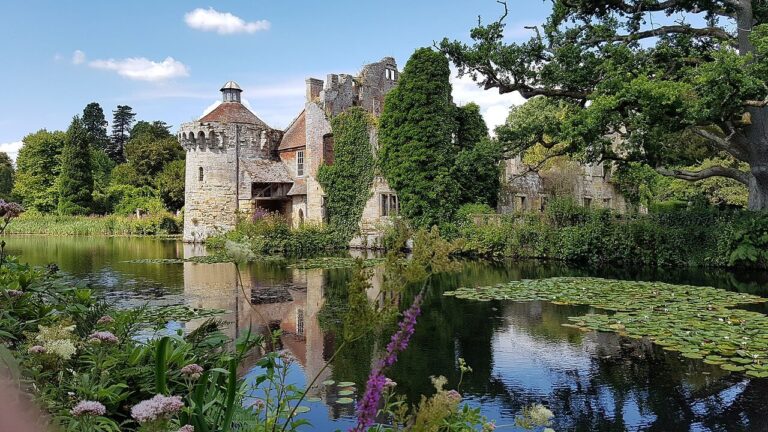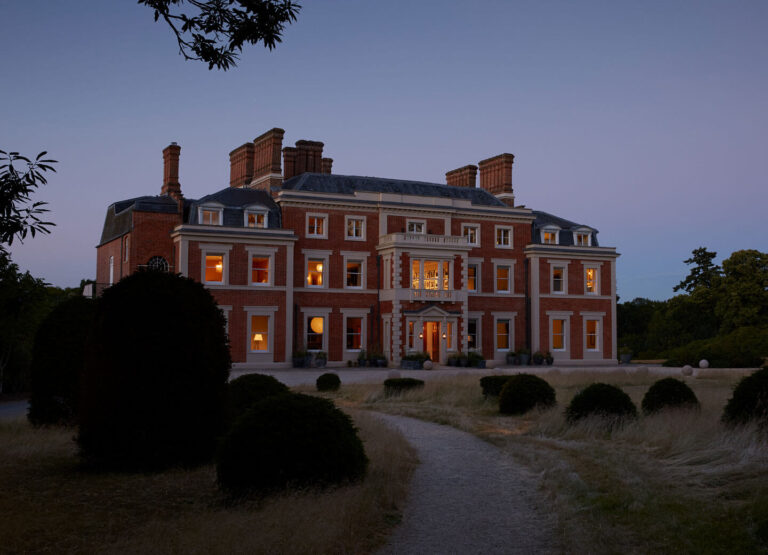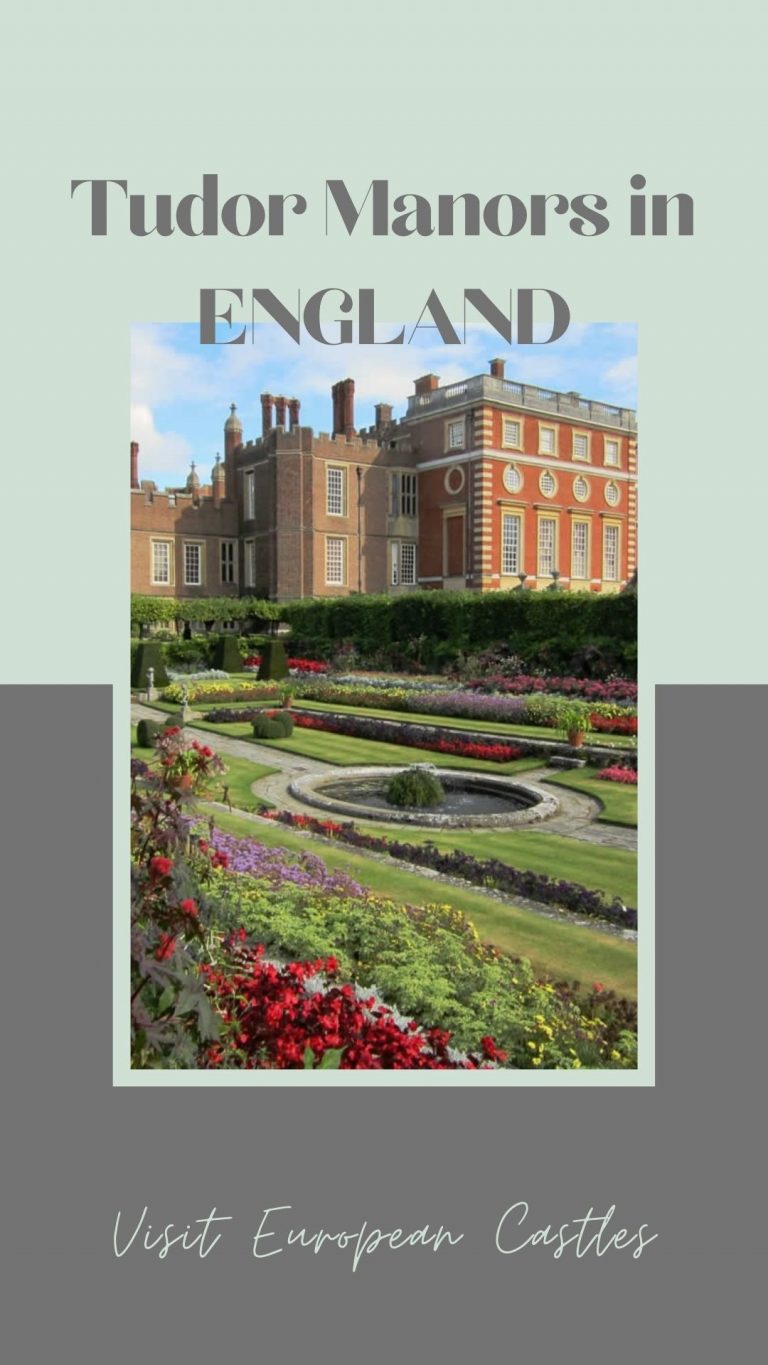The Best Stately Homes in Bedfordshire
Bedfordshire is a county in the East of England with the largest cities being Luton and Bedford. There are also beautiful castles and country houses in England.
Bedfordshire is located close to London and the surrounding home counties. It features beautiful countryside with many walking and cycling tracks in the Forest of Marston Vale, Greensand Ridge, and the Dunstable Downs.
Enjoy the English countryside and visit or stay in the grand Bedfordshire stately homes and historic houses.

Woburn Abbey
Woburn Abbey is a country house and seat of the Duke of Bedford. The house is built on the site of a Cistercian Abbey that was founded in 1145. After the dissolution of the monasteries by King Henry VIII, the estate was granted to the 1st Earl of Bedford.
The house was largely rebuilt in 1744 by architects Henry Flitcroft and Henry Holland. Anna Russell, Duchess of Bedford started the afternoon tea ritual in England. She was a lifelong friend of Queen Victoria and also served as Lady of the Bedchamber.
In 1786, future American presidents John Adams and Thomas Jefferson visited Woburn Abbey as well as other grand houses in the area. The house also features a large art collection as the Duke of Bedford owns some of the finest private collections in the country. The collection includes work by Rubens, Van Dyck, and Canaletto.
After the Second World War, a large part of the house was demolished due to dry rot. The house was then opened to the public and over the years they added a Safari Park.
Where: Woburn
Built: 1744
Visitor information: the house is open to visitors. Visit the website for more information.

Luton Hoo
Luton Hoo is a grand country house and estate on the border of Bedfordshire and Hertfordshire. In 1763, the estate was bought by former Prime Minister John Stuart, 3rd Earl of Bute. He built a neoclassical house after a design by architect Robert Adam and the park was redesigned by Capability Brown.
The grandson of the third Earl redesigned the house into the building we see today. Architect Robert Smirke added Gothic and Greek Revival elements to the house. A large fire destroyed much of the house in 1843, but a few years later, John Shaw Leigh bought the house and restored it.
In the late 19th century, the lady of the house held lavish parties at Luton Hoo, it was at this country estate that Prince Albert, Duke of Clarence and Avondale (grandson of Queen Victoria) proposed to Princess Mary of Teck.
In 1903, the house was bought by Sit Julius Wernher, who remodeled the interiors in Belle Epoque style to the designs of the architects of the Ritz Hotel. Since 2007, the country house is a hotel, with golf course and spa.
The estate houses an octagonal walled garden which was designed in the 1760s and is open to the public in the Summer months.
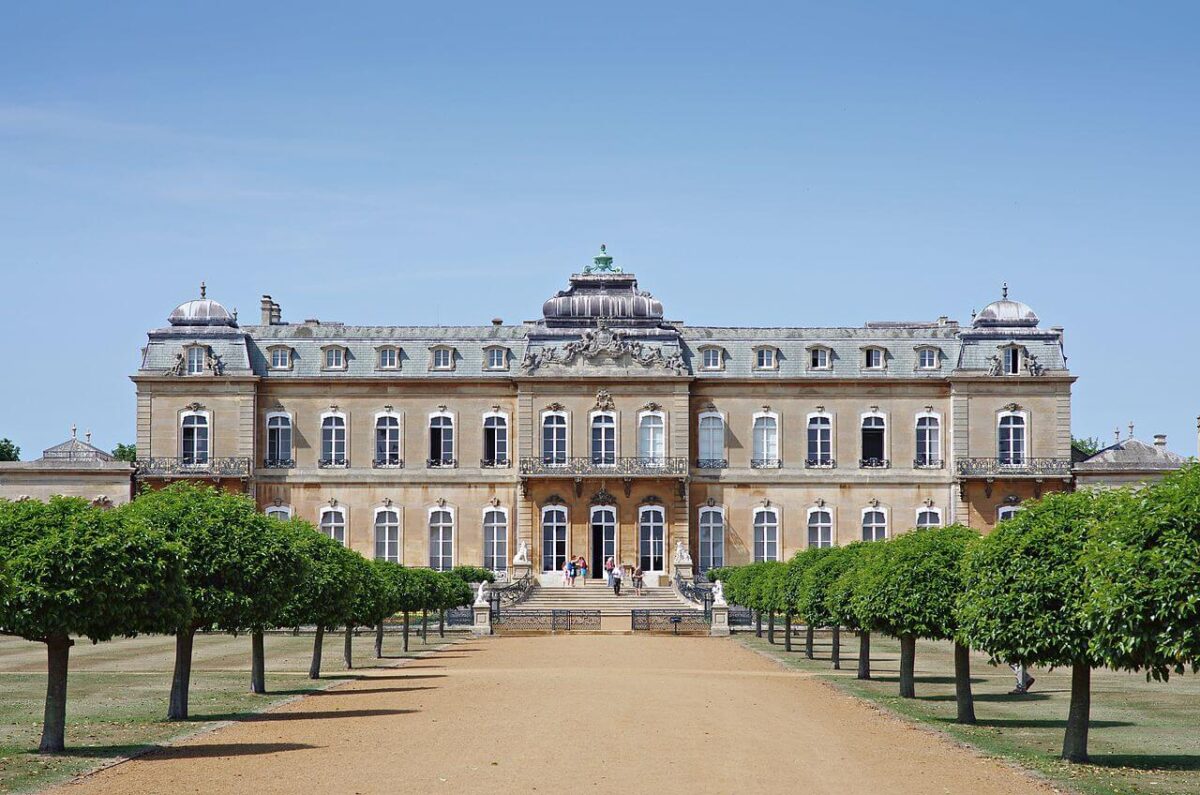
Wrest Park
Wrest Park is an early 19th century country house and estate in Bedfordshire. The house was built by Thomas de Grey, 2nd Earl de Grey who got inspired by French buildings after a trip to Paris.
The interiors of Wrest Park are some of the earliest Rococo Revival interiors in England. In the Frist World War, the house was used as a military hospital.
Wrest Park has 92 acres of gardens which take you on a journey of three centuries of garden design. At the park, you have beautiful countryside views as well as woodland walks. The park also houses the Baroque Archer Pavilion which has spectacular wall paintings.
Where: Silsoe
Built: 1834–39
Style: French/Rococo Revival
Visitor information: parts of the house are open to visitors and the garden as well. Visit the website for more information.

Shuttleworth House
Shuttleworth House or The Mansion House (Old Warden Park) is a 19th century country house designed by Henry Clutton. The Jacobean-style house was built for Joseph Shuttleworth and had to rival Gawthrope Hall in Lancashire which was also owned by the Shuttleworth family.
Inside, the rooms have many period details such as gold-leafed ceilings, paneled walls, a Victorian Grand Piano, and chandeliers.
Surrounding the house lies the Swiss garden, a beautiful Victorian and Regency garden with wildlife, an Indian kiosk, bridges, and a grotto.
Where: Old Warden
Built: 1875
Style: Jacobean
Visitor information: the house and garden are open to visitors. Visit the website for more information.
Someries Castle
Someries Castle is a ruined 15th century castle in Hyde. Despite the name, it wasn’t actually a castle but a fortified manor house instead. The house was built around 1430 by Sir John Wenlock and it is considered one of the first brick buildings in England.
After the battle of Tewkesbury, where Wenlock died, the manor was acquired by the Rotherham family. The house was demolished in the 18th century but parts of the structure remains in the gatehouse, the chapel, and the lodge.
Where: Hyde
Built: 15th century
Visitor information: the ruin is free to visit
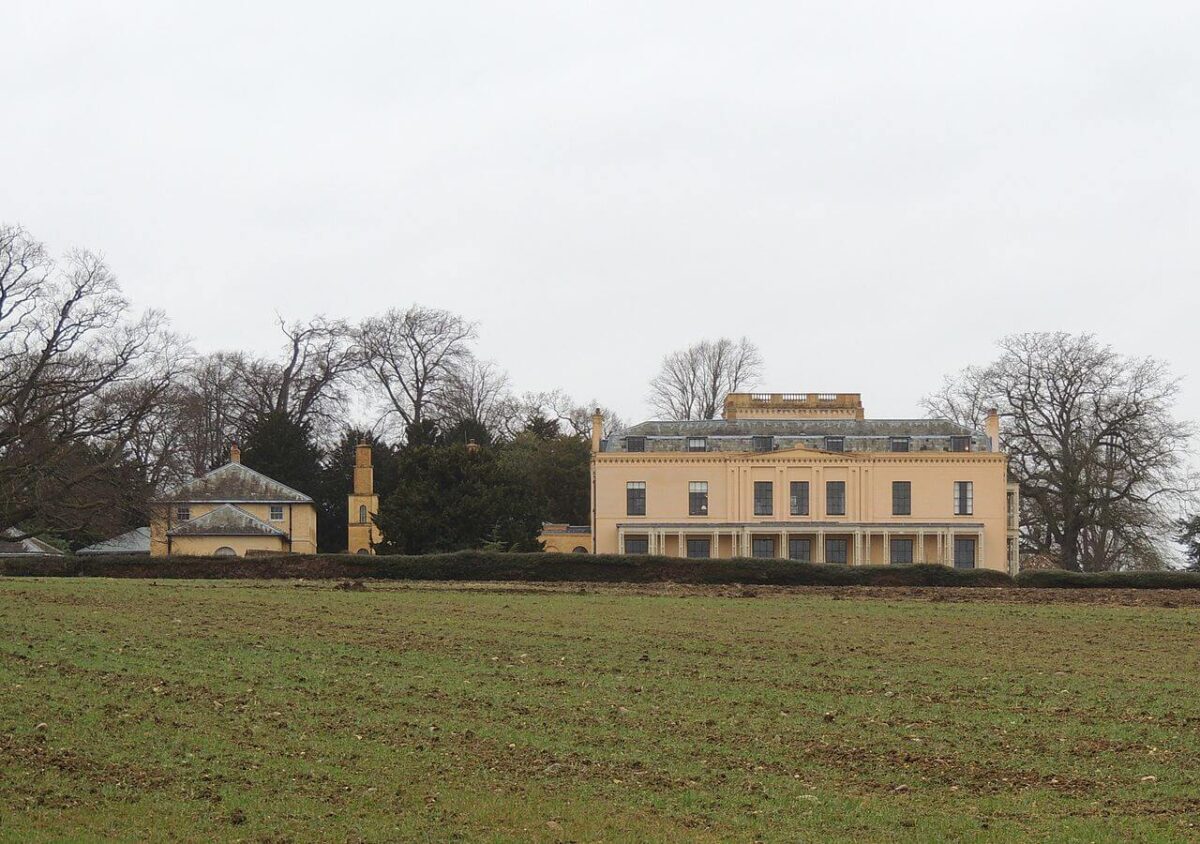
Moggerhanger House
The original house was a small Georgian manor but in 1790 Godfrey Thornton (director of the Bank of England), bought the estate and ask John Soane to remodel the house. It is one of the most complete houses that has survived of John Soane.
The house is set in 33 acres of parkland and woodland. The gardens were designed by Humprhy Repton.
In 1994, the house was in bad state but all original features were still present. In recent years the house and garden have been restored.
Where: Moggerhanger
Built: 1790
Visitor information: the house is open for guided tours on selected days. The grounds are open daily. Visit the website for more information.

Turvey House
Turvey House is a country house and garden that is home to the Hanbury family. The house was built in the 1790s by John Higgins. It was originally built as a Georgian manor house but later the house was redesigned in Neoclassical style.
The grounds also house a walled kitchen garden, an ornamental garden, and pleasure grounds.
Where: Turvey
Built: 1790s
Style: Neoclassical
Visitor information: the house is open to visitors. Visit the website for more information.

Harlington Manor
Harlington Manor is a manor house that dates back to the 14th century. For 470 years, the house was the home of the Burwell and Wingate families.
In 1660, author John Bunyan was imprisoned and interrogated a Harlington Manor. He was sent to Bedford goal where, in the next 12 years, he would write The Pilgrim’s Progress which is one of England’s best-selling books.
Today, Harlington Manor is used as a bed and breakfast though pre booked group tours can also be arranged.
Where: Harlington
Built: 14th century
Visitor information: visit the website for more information about the group tours.

Eggington House
Eggington House is a 17th century manor house in Bedfordshire. At the time of the building it was innovative in its design, which was especially unusual in more rural areas of England. The house was built for Huguenot John Renouille (or Reynal), who would become Sheriff of Bedfordshire.
Eggington House in still in private ownership but can be booked for weddings and events.
Where: Eggington
Built: 17th centuruy
Style: Queen Anne
